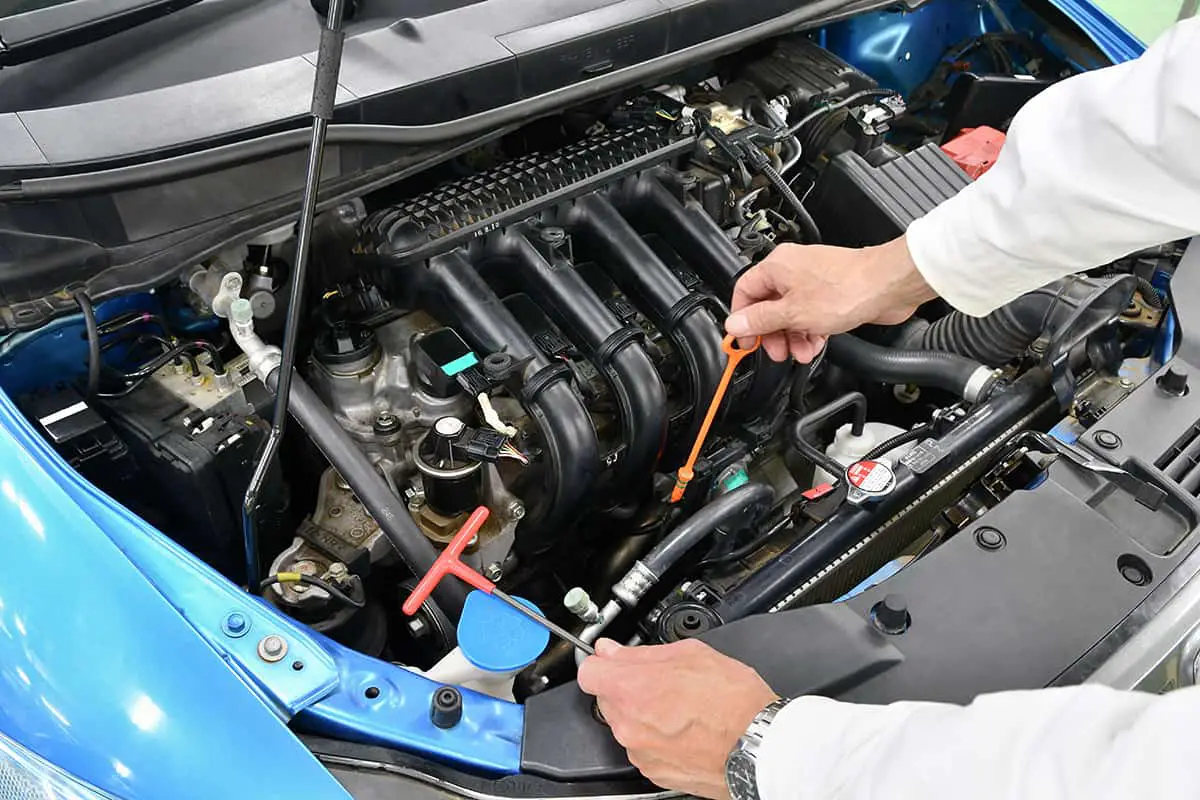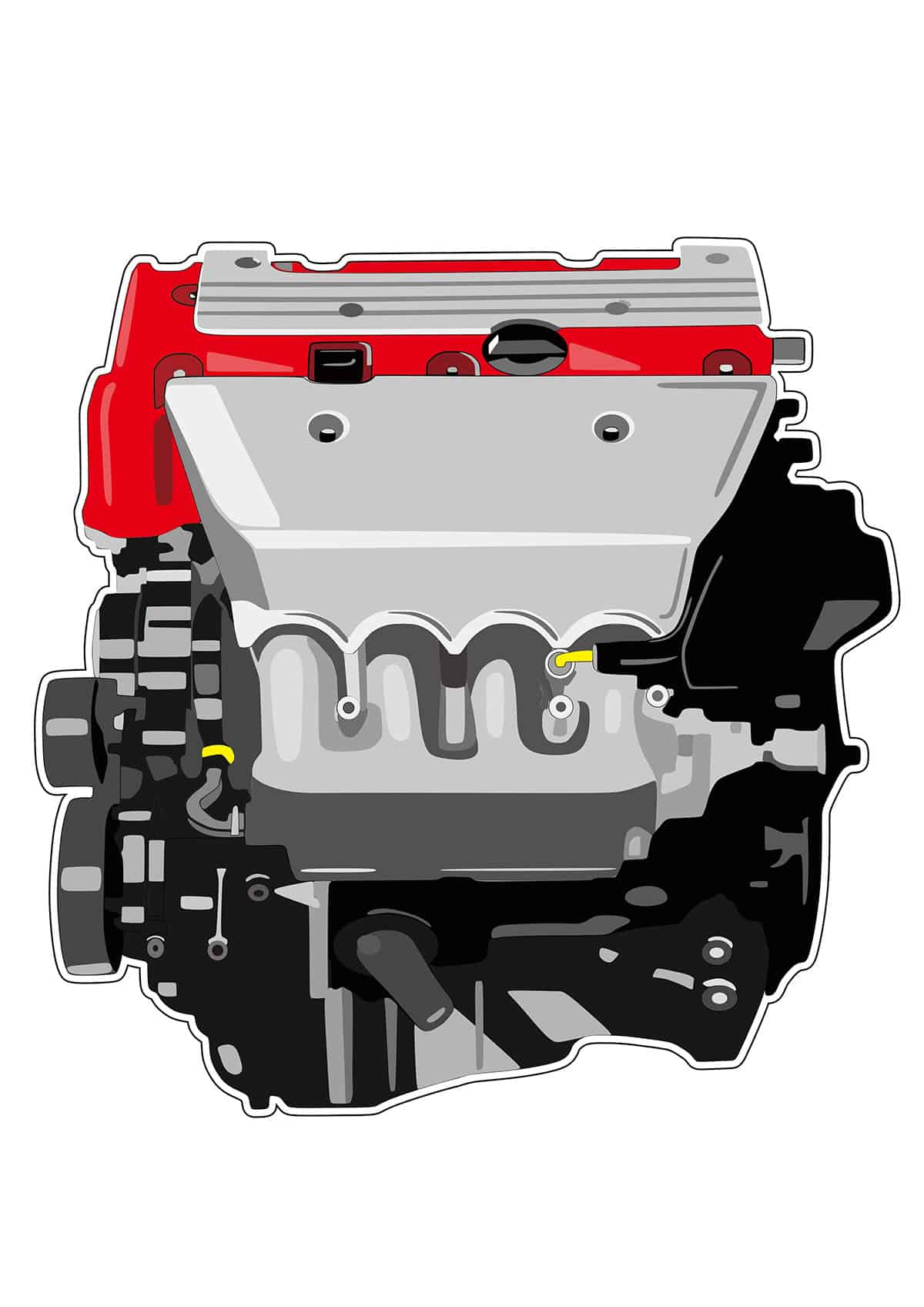The automotive world is filled with debates, and one that has caught the attention of many enthusiasts is the comparison between the K20 and K24 engines. Both power units hail from the same family but bring distinct characteristics to the table.
The K20 engine is known for its high-revving nature and sporty performance, while the K24 offers greater displacement and torque. Determining which one is “better” largely depends on individual preferences and specific use cases.
This guide will dive deeper into their histories, performance metrics, modifiability potential, and much more. If you’re looking to get a K20 or K24 engine, this guide is for you!
History and Origin of K20 and K24 Engine

The journey of the K20 and K24 engines starts with Honda, a name synonymous with reliability and innovation. These engines, part of the esteemed K-Series, emerged during an era when Honda aimed to push the boundaries of engineering while retaining its trademark efficiency.
K20 Engine: Introduction and background
The K20 made its debut in the early 2000s, turning heads with its performance capabilities. Found under the hood of models like the Honda Civic Type R and Acura RSX, the K20 quickly became the go-to choice for those seeking a blend of daily drivability and spirited driving.
With its high-compression ratio and advanced VTEC system, the K20 carved a niche for itself in the world of compact performance engines.
K24 Engine: Introduction and background
Introduced slightly after the K20, the K24 took everything its predecessor offered and added more displacement. Featured prominently in vehicles such as the Honda Accord and CR-V, the K24 was designed with a focus on providing robust torque at lower RPMs.
Its larger size allowed for more power output, making it a favorite for those looking for that extra punch in everyday driving. Its adaptability also meant that tuners and modders embraced the K ensure its place in automotive folklore.
Physical Specifications
The dimensions, design, and core features determine much about an engine’s performance and application. Let’s uncover what makes the K20 and K24 engines tick.
K20
The K20 stands as a compact yet powerful unit. Typically, it boasts a displacement of 2.0 liters, shaped by its four-cylinder layout. Its design integrates a bore (diameter) of 86mm and a stroke (piston movement) of 86mm, leading to its “square” configuration. This setup contributes to the engine’s high-revving nature.
K24
On the other hand, the K24 offers a larger 2.4-liter displacement. Like its counterpart, it uses a four-cylinder layout. However, it features a bore of 87mm and a longer stroke of 99mm. This increased stroke provides the K24 its torque-rich characteristic, especially noticeable during low to mid-range RPMs.
Performance Metrics
Performance numbers are often the most anticipated part of any engine discussion. How an engine behaves under acceleration, its power delivery, and efficiency play a huge role in its appeal.
K20
Being high-revving, the K20 outputs impressive horsepower figures, usually peaking near the redline. Its advanced VTEC system optimizes valve timing, allowing for aggressive power delivery in high RPMs while maintaining fuel efficiency during cruising speeds.
K24
The K24, with its increased displacement, excels in delivering torque at lower RPMs. This means quick accelerations and robust pulls, especially during city drives. Its VTEC system, too, balances performance with efficiency, making it suitable for diverse driving conditions.
Modifiability and Upgrade Potential
For car enthusiasts, the potential to modify and upgrade an engine is often as exciting as its stock performance.
K20
The compact design of the K20 makes it a favorite for tuners. Its high-revving nature pairs well with aftermarket turbochargers, while its robust build can handle aggressive camshafts and intake systems, unleashing even more power.
K24
The K24’s larger displacement opens doors for significant power gains. Popular mods include turbocharging and high-flow exhaust systems. Additionally, its flexibility allows for hybrid builds, combining K20’s head with K24’s block for an optimal blend of revs and torque.
Reliability and Lifespan
The true essence of an engine doesn’t just lie in its power or performance; its ability to run smoothly over the years is a testament to its quality.
K20
The K20 is known for its resilience. With regular oil changes and routine maintenance, this engine can effortlessly surpass 200,000 miles. While some owners report occasional issues with sensors or the VTEC system, the engine’s core remains robust and dependable.
K24
Similarly, the K24 boasts a commendable lifespan. Regularly serviced K24 engines have been known to run beyond 250,000 miles. Its larger displacement can mean a tad more wear and tear over time, but with routine check-ups, it holds its ground firmly. Some owners have pointed out minor oil consumption issues, but these are generally manageable with regular checks.
Cost Analysis
Beyond performance and reliability, cost plays a pivotal role in decision-making for many.
K20
Acquiring a K20 can be more affordable due to its prevalence in various Honda models. While initial purchase prices can vary, spare parts and aftermarket upgrades tend to be relatively budget-friendly. Regular maintenance, given the engine’s uncomplicated nature, doesn’t usually break the bank.
K24
The K24, found in a broader range of vehicles, might have slightly varied pricing. Parts are abundantly available, leading to competitive pricing. Maintenance is straightforward, though the larger displacement might mean slightly higher costs for certain services like oil changes due to the extra volume needed.
K20 vs K24 Summary Table
| Section/Feature | K20 Engine | K24 Engine |
| History and Origin | Debuted in early 2000s, Honda Civic Type R, Acura RSX | Introduced after K20, Honda Accord, CR-V |
| Physical Specifications | 2.0 liters, 86mm bore and stroke | 2.4 liters, 87mm bore, 99mm stroke |
| Performance Metrics | High-revving, VTEC system | Torque-rich, low to mid-range RPMs, VTEC system |
| Modifiability | Favors turbochargers, aggressive camshafts | Turbocharging, high-flow exhaust, hybrid builds |
| Reliability and Lifespan | Can surpass 200,000 miles, occasional sensor issues | Often beyond 250,000 miles, minor oil consumption |
| Cost Analysis | Affordable, budget-friendly parts | Varied pricing, competitive parts availability |
FAQs
1. Which engine is more popular?
If we go by sheer numbers, the K24 might edge out due to its wider application in more vehicle models. Both the K20 and K24 engines have garnered significant attention in the automotive community, but for different reasons.
The K20, being a high-revving powerhouse, has been a favorite among enthusiasts seeking sporty performance and is often associated with iconic cars like the Honda Civic Type R.
On the other hand, the K24, with its larger displacement, is more common in a variety of vehicles ranging from sedans like the Honda Accord to SUVs like the CR-V.
2. Which engine is more suitable for a daily driver?
The K20, with its sporty nature, provides an exhilarating driving experience, especially when pushed to higher RPMs. It’s fantastic for those who desire a spirited drive every now and then.
Conversely, the K24 is designed to offer a strong torque at lower RPMs. This means that for city driving with frequent stops and starts, the K24 delivers power more readily, making daily commutes smoother and more comfortable. Additionally, the K24’s presence in family-friendly vehicles like the Accord and CR-V hints at its practicality and suitability for everyday use.
3. Are there any recalls or major issues associated with either engine?
Like any mechanical component, they aren’t without their quirks. There haven’t been widespread recalls specifically tied to the engines themselves. Yet, some owners have reported issues over the years.
For the K20, occasional reports focus on VTEC solenoids and sensors malfunctioning. This isn’t a recall-level concern but something to be aware of.
The K24, on the other hand, has seen sporadic mentions of oil consumption in certain versions. It’s a minor issue that can be managed with regular oil-level checks.






